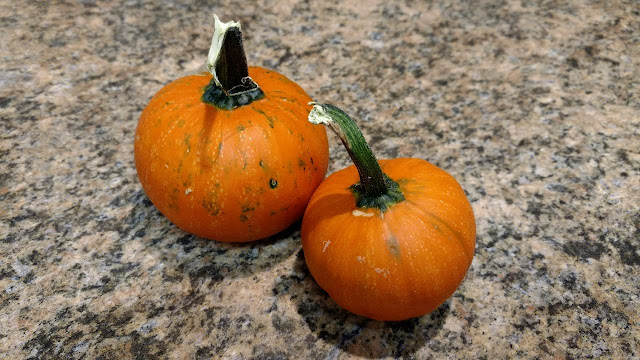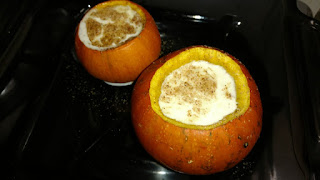
Recipe: Turn tiny pumpkins into fun fall side dish

|
What do you do with little pumpkins?
Every October, these baseball-size orange orbs pop up at farmstands and in markets. They’re attractive, piled in a basket or arranged in a harvest display. But how do you eat them?
Treat mini pumpkins like what they are: Winter squash. Just about any recipe for acorn squash, for example, can be adapted to a mini pumpkin, too.
Like any vegetable, some varieties are tastier than others. (Flat, hard minis border on “decorative use” only.) For cooking, choose mini pumpkins with smooth skin and round shape; they have better texture and more flesh.
This summer, I grew a late harvest of Wee-B-Little pumpkins, grown from seed (available from JohnnySeeds.com). The 1999 All-America Seed Selection winner, this compact semi-bush dwarf pumpkin thrives in a relatively small space; the whole plant covers less than 3 feet square.
Planted in early July, Wee-B-Little has been prolific with several 3- to 4-inch round pumpkins, weighing just under 1 pound each. They’re adorable.
My original intention was to carve a bunch of mini jack-o-lanterns, but the seed cavity inside each Wee-B-Little was too small and the walls too thick.

|
Comments
0 comments have been posted.Sacramento Digs Gardening to your inbox.
Sites We Like
Garden Checklist for week of July 21
Your garden needs you!
* Keep your vegetable garden watered, mulched and weeded. Water before 8 a.m. to reduce the chance of fungal infection and to conserve moisture.
* Feed vegetable plants bone meal, rock phosphate or other fertilizers high in phosphate to stimulate more blooms and fruiting. (But wait until daily high temperatures drop out of the 100s.)
* Don’t let tomatoes wilt or dry out completely. Give tomatoes a deep watering two to three times a week.
* Harvest vegetables promptly to encourage plants to produce more. Squash especially tends to grow rapidly in hot weather. Keep an eye on zucchini.
* Pinch back chrysanthemums for bushy plants and more flowers in September.
* Remove spent flowers from roses, daylilies and other bloomers as they finish flowering.
* Pinch off blooms from basil so the plant will grow more leaves.
* Cut back lavender after flowering to promote a second bloom.
* It's not too late to add a splash of color. Plant petunias, snapdragons, zinnias and marigolds.
* From seed, plant corn, pumpkins, radishes, winter squash and sunflowers.